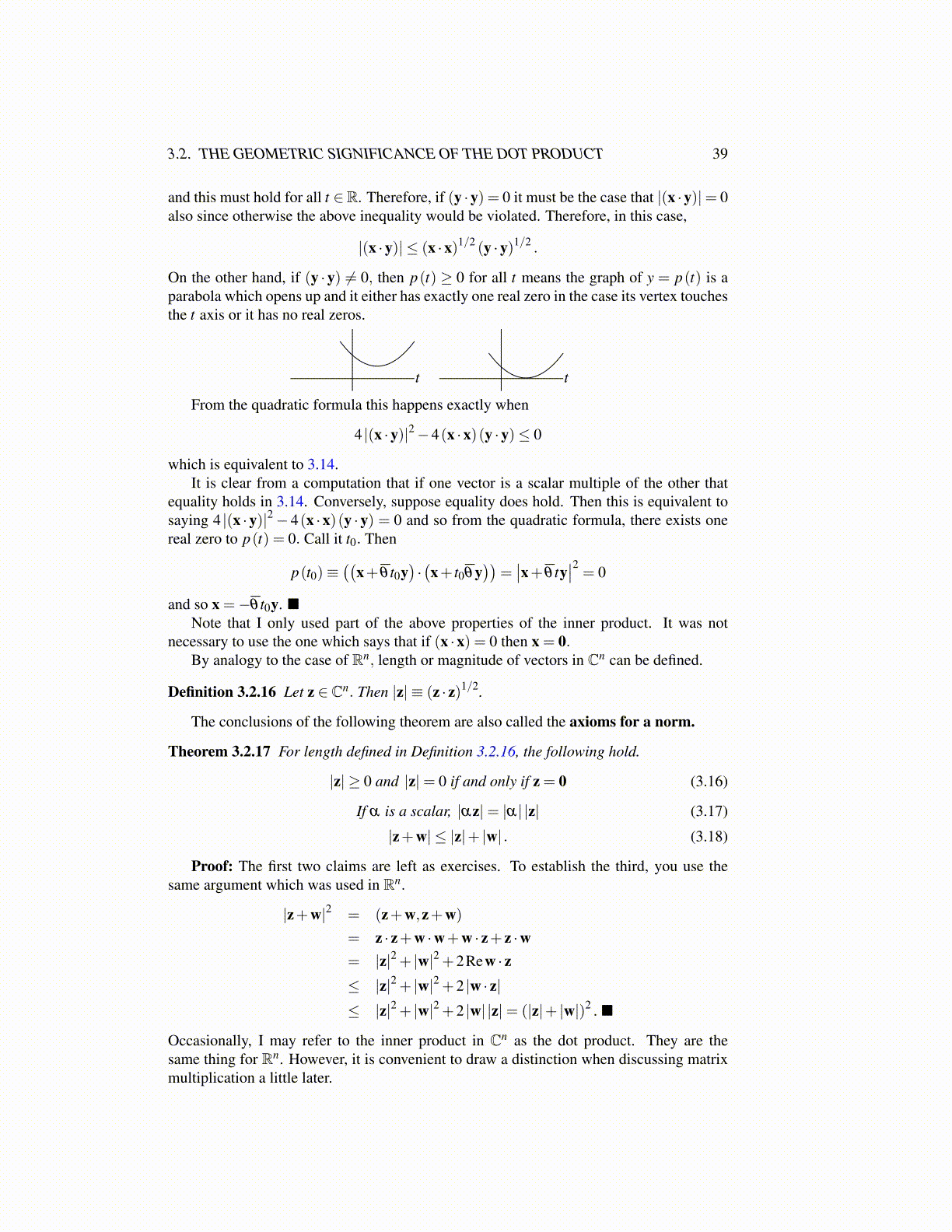
3.2. THE GEOMETRIC SIGNIFICANCE OF THE DOT PRODUCT 39
and this must hold for all t ∈R. Therefore, if (y ·y) = 0 it must be the case that |(x ·y)|= 0also since otherwise the above inequality would be violated. Therefore, in this case,
|(x ·y)| ≤ (x ·x)1/2 (y ·y)1/2 .
On the other hand, if (y ·y) ̸= 0, then p(t) ≥ 0 for all t means the graph of y = p(t) is aparabola which opens up and it either has exactly one real zero in the case its vertex touchesthe t axis or it has no real zeros.
t t
From the quadratic formula this happens exactly when
4 |(x ·y)|2−4(x ·x)(y ·y)≤ 0
which is equivalent to 3.14.It is clear from a computation that if one vector is a scalar multiple of the other that
equality holds in 3.14. Conversely, suppose equality does hold. Then this is equivalent tosaying 4 |(x ·y)|2− 4(x ·x)(y ·y) = 0 and so from the quadratic formula, there exists onereal zero to p(t) = 0. Call it t0. Then
p(t0)≡((
x+θ t0y)·(x+ t0θy
))=∣∣x+θ ty
∣∣2 = 0
and so x =−θ t0y. ■Note that I only used part of the above properties of the inner product. It was not
necessary to use the one which says that if (x ·x) = 0 then x = 0.By analogy to the case of Rn, length or magnitude of vectors in Cn can be defined.
Definition 3.2.16 Let z ∈ Cn. Then |z| ≡ (z · z)1/2.
The conclusions of the following theorem are also called the axioms for a norm.
Theorem 3.2.17 For length defined in Definition 3.2.16, the following hold.
|z| ≥ 0 and |z|= 0 if and only if z = 0 (3.16)
If α is a scalar, |αz|= |α| |z| (3.17)
|z+w| ≤ |z|+ |w| . (3.18)
Proof: The first two claims are left as exercises. To establish the third, you use thesame argument which was used in Rn.
|z+w|2 = (z+w,z+w)
= z · z+w ·w+w · z+ z ·w= |z|2 + |w|2 +2Rew · z≤ |z|2 + |w|2 +2 |w · z|≤ |z|2 + |w|2 +2 |w| |z|= (|z|+ |w|)2 . ■
Occasionally, I may refer to the inner product in Cn as the dot product. They are thesame thing for Rn. However, it is convenient to draw a distinction when discussing matrixmultiplication a little later.